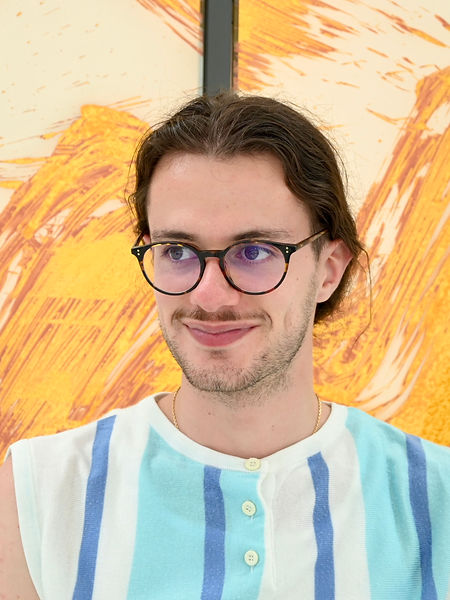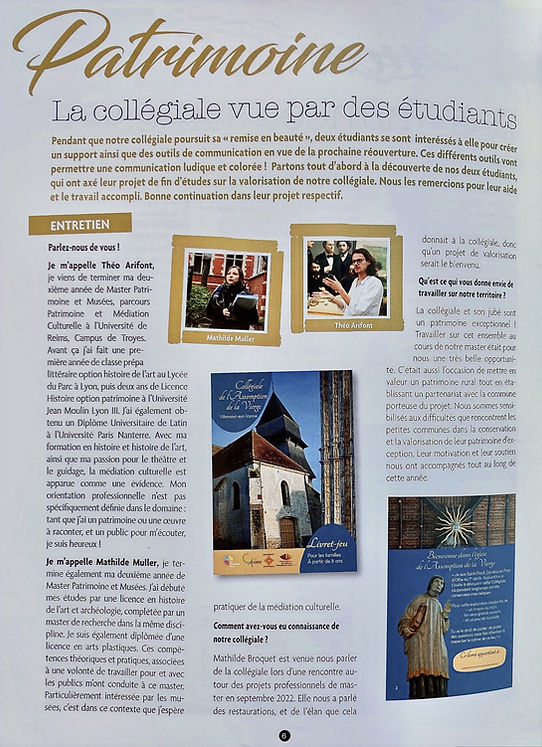THEO ARIFONT OFICIAL GUIDE

By Théo Arifont (EI)
My Story
Melting History and Drama

Theater always took a very important place in my life. I started drama lessons in my early years and played my first characters at Menthon Saint Bernard Castle during the dramatized tours.
Then, I became passionate about history and history of arts since I was spending time in such a beautiful monument. So, I graduated a bachelor's degree in History at Lyon University.
Then, I finally understood that my job will me to tell stories about History. So I studied cultural mediation with a Master's Degree in Heritage and Museums at Troyes University. It allowed me to obtain the Oficial Guide Licence.
Guiding tours is so fulfilling for me. I just love to share my knowledge and understanding of the landscapes surrounding us, the architecture and the events. I want to show that you only need to know where to look at to found something amazing. Finally, I love guiding you through the mysteries of History.
What is a Guide Conférencier (official French Guide) ?
We often tend to reduce the term to ‘tourist guide’, but we don't just look after tourists! To understand this, let's start with a definition given by the French Ministry of Culture: “The guide conférencier, a heritage mediator, raises public awareness of the history of the town and changes in the landscape and, by asking questions, involves the public in discovering the heritage. They must be able to lead tours or workshops for a wide variety of audiences, including young people, schoolchildren, local residents and tourists”. (Ministry of Culture website)
So it's true that a large proportion of our visitors are tourists. And of all nationalities! So speaking several languages is one of the fundamental skills of our profession. I personally guide in French, English and Spanish.
We can also guide groups of companies, local people, young people, students and schoolchildren, and work with cultural associations, hospitals, nursing homes and many other partner institutions.
We are cultural mediators, i.e. people who bring together a public and a work of art or heritage object. We are intermediaries who provide access to our heritage by explaining it, providing keys to understanding it and offering a historical, cultural and artistic perspective on what surrounds us.
A guided tour is not a history lesson, it's a cultural leisure activity in which the mediator uses your eyes to help you understand what surrounds you.
Our profession is regulated by the Ministry of Culture, which awards us a professional guide card. This certifies that we are qualified to guide visitors through historic monuments and museums. Cities or regions awarded the Villes et Pays d'Art et d'Histoire label (Cities and Countries of Art and History) are also required to employ only tour guides to conduct tours in their area.
As a member of the public, you can ask to see your guide's card if he or she does not show it to you.
This card is issued on completion of two courses of study:
-
The professional guide-conférencier bachelor's degree
-
Certain accredited heritage and museum Master’s degrees with three sets of skills: 2 languages of learning, guide-conférencier skills and professional practice.
I took the Master's course, which enabled me to extend my range of skills to cultural mediation in general and to develop a specialisation through specific projects, work placements and a thesis.
To protect our profession, defend our interests and discuss our work, we have formed associations. I'm a member of the Annecy guides association, GRENAT, the Auvergne-Rhône-Alpes guides association, and the Fédération Nationale des Guides Interprètes et Conférenciers (FNGIC). These are essential professional networks that it is important to maintain and promote. Each has a directory of guides that you can contact according to your needs and the areas you are visiting.
I hope you now have a slightly clearer idea of what a Tour Guide is! We look forward to seeing you soon!

Senior's year project

Presentation poster of the project

Explaining signs located inside the monument
One of the main project of my senior's year was to conceive a cultural route made of five panels to learn about the Villemaur's church. My colleague Mathilde Muller completed this work with her booklet. Together, we worked to highlight this amazing heritage of Troyes and region's golden age in art, sculpture and architecture.

Article of the local newspaper La n'Othe


Villemaur's church, nave and rood screen (XVIe)
Villemaur's church, outside and bell tower (XVIe)
Internship at IMAJ, UNESCO Observatory
I did my first Master's degree internship at the Youth Art Worldwide Institute (IMAJ : Institut Mondial d'Art de la Jeunesse), UNESCO Observatory. This cultural foundation based in the French city of Troyes is a reference in the city as in its Region, in Europe and in the World by participating in a cultural network held by the UNESCO. "Recording childhood and youth in humanity's memory" is the main goal of IMAJ. It organizes many art contests and exhibitions to this end. I indeed participated in the making process and mediation of two of these expos which you can give a look here.
I first designed from the beginning to the end the exhibition "Techniques en herbe" using the winners of the International Art Contest organized by IMAJ. I created the scenario, plates and signs, exhibition catalogue and game booklet for children with different levels.

Exhibition catalogue, Techniques en herbe

Explaining signs, Techniques en herbe

My colleague Anne-Lyse and I worked on game booklets, games, plates and signs for the main exhibition "Graines d'artistes du monde entier". During the time of the expo, we did welcome schools groups and individuals doing tours.
Booklet 7-9 yo, Graines d'artistes du monde entier
Video clip, Graines d'artistes du monde entier